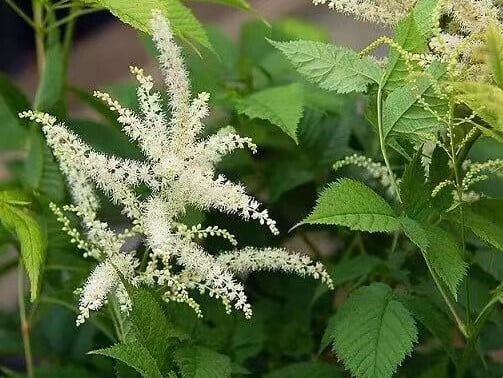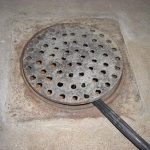Have you ever seen a plant that has maroon leaves? If you haven’t, then you’re at the right place. Chinese Astilbe, also known as the false goat’s beard, is a head-turner plant. Because of its beautiful color and tall height, it is quite famous.
The average height of this plant is around 45-90 centimeters. The leaves have an oval shape and are quite hairy.
This succulent belongs to Russia. One may plan on growing this succulent in their house. Before deciding to grow Chinese Astilbe at your house, you must investigate some requirements.
Chinese Astilbe Care
Sunlight
Like all succulents, Chinese Astilbe requires an indirect source of light. By indirect, I mean to say that this plant receives sunlight should be through a window or a curtain. Direct sunlight is good, but long hours of direct sunlight may tamper the growing process of this succulent. If you’re growing this plant outside, you must find a shady place near your garden to avoid repercussions. Too much direct sunlight can burn down the leaves and sometimes cause fungus. However, this does not mean you completely stop placing your plant in sunlight. Sunlight is essential and plays an important role in the growing process.
Soil
Soil is considered one of the most important aspects of growing a Chinese Astilbe. Soil should be well-draining and should have a good draining system. With good drainage, the soil should allow the excess water to drain quickly. The excess water on top of your soil could destroy your plant. What it does is it stops the root from getting air and sunlight. Because of this, the root stops functioning and eventually dies. This phenomenon is known as root rotting. Many succulent owners fear this disease. The perfect soil for your Chinese Astilbe would be perlite fixed with sand.
Water
Chinese Astilbe requires water throughout the week. It may seem odd why this succulent requires a consistent watering cycle. This is because this succulent prefers moist soil. The owner must take care of the watering cycle of this plant, as keeping the soil dry for longer periods might kill this plant. However, this does not mean that you over-water your plant. Over-watering has many drawbacks, like root rot and black rot. During winter, you might want to delay the watering process for 2-3 weeks as the environment is already cold. The best way to avoid different issues is to monitor your plant’s watering cycle.
Temperature And Humidity
Chinese Astilbe has a certain temperature range in which it thrives. To grow a healthy home plant, you must carefully look at the range. The temperature ranges from 18-35 degree centigrade. If you’re planning on growing this succulent at a place where it is likely that temperatures might go beyond this range, then you must take special precautions.
During extreme winters, you should keep your Chinese Astilbe indoors to be safe from frostbite. Talking about humidity, as this soil prefers a normal humid environment, it is advisable to keep it at a place with normal humid levels.
Fertilizer
Although Chinese Astilbe is a low-maintenance plant, giving it a treat now and then won’t harm it. The best time to give your plant a treat is from spring to summer. It is considered the best as succulents grow at the fastest rate. The best fertilizer you can give your plant is a balanced organic fertilizer. The process of giving the fertilizer to your Chinese Astilbe should be slow, as giving the fertilizer in huge amounts may saturate your plant.

Chinese Astilbe Propagation
The most suitable way of propagating your Chinese Astilbe is through stem cuttings. This process requires less effort and money. The first step would be to take a stem cutting of your Chinese Astilbe. Then, it would help if you put that cutting into a pot filled with water. Afterward, you’ll have t wait for your plant to react to this change. Once the little roots pop out, you must plant the cutting into a new container filled with soil. Finally, you’ll have yourself a new plant.
Pests and Diseases
Chinese Astilbe is prone to common pests. The common pests that invade your succulent are Japanese beetles, spider mites, and woodchucks. You can use a spray bottle or a normal medicine to get rid of them.
Root rot and Blackroot are two of the main diseases your Chinese Astilbe is vulnerable to. Both are a result of excess sunlight and over-watering. To avoid such problems, you must look after your plant’s water and sunlight cycle.



